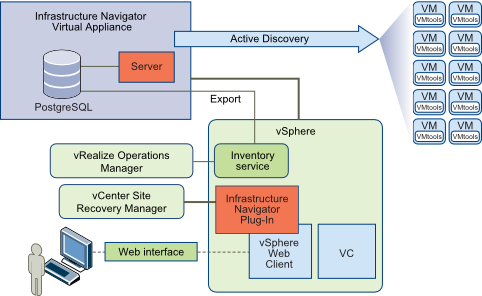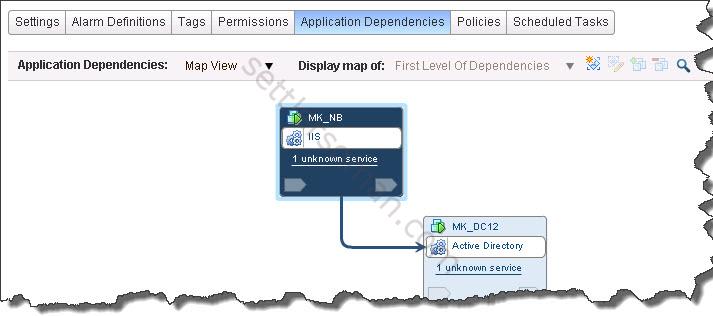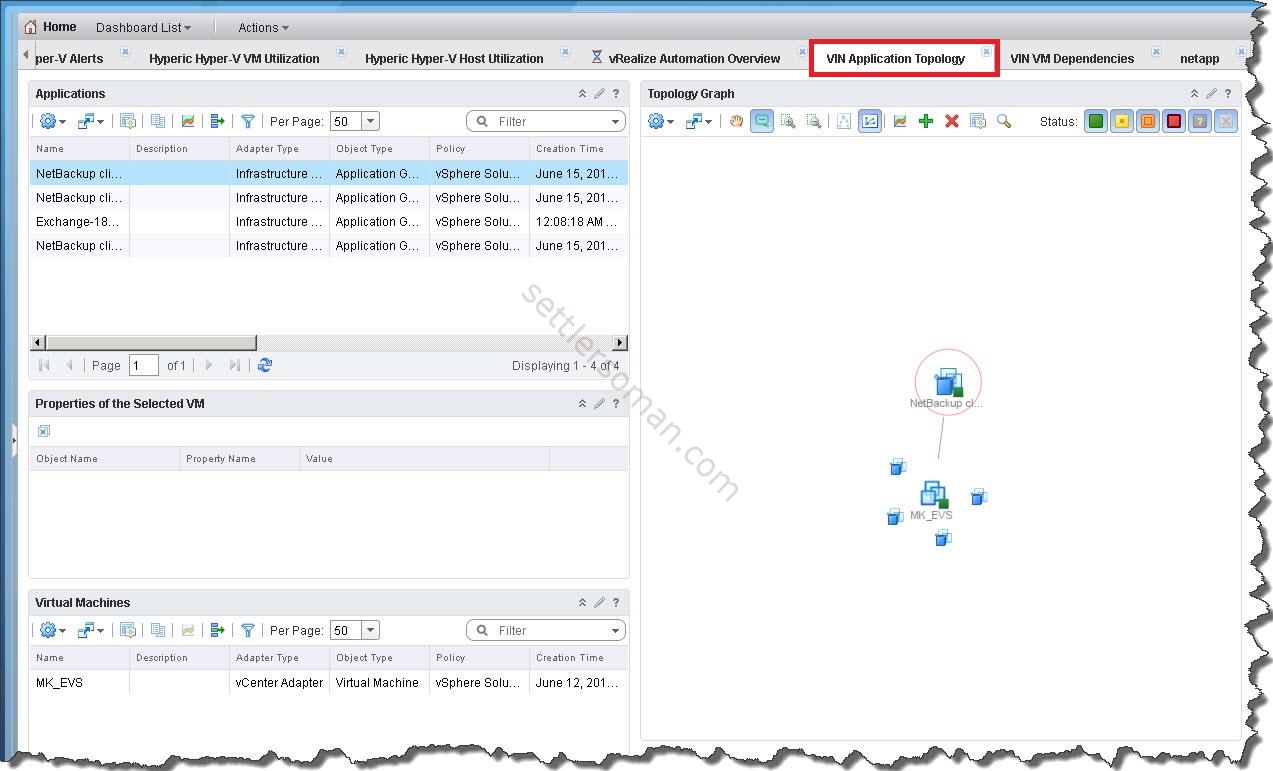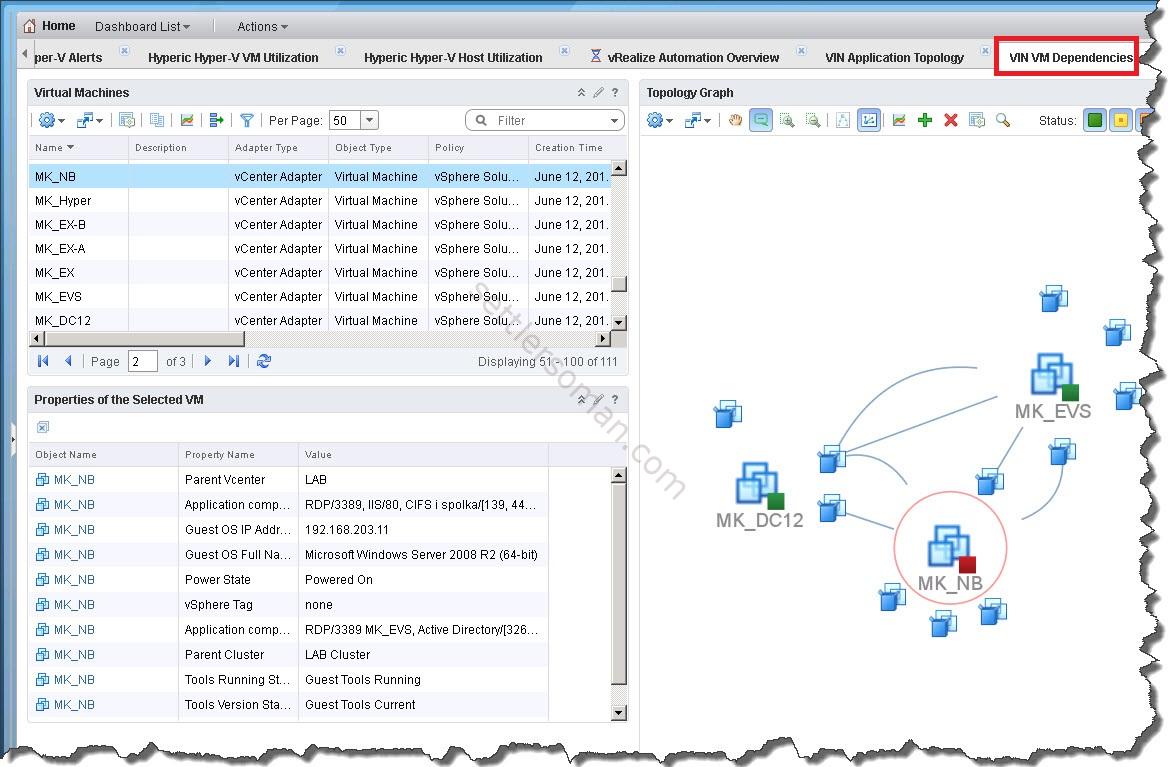Recently I have done some vRealize Operations Manager (vROps) POCs. Depending on version/license of vROps there are some components you can deploy:
- vRealize Operations Manager
- vRealize Infrastructure Navigator
- vRealize Hyperic Server
- vRealize Configuration Manager
- vRealize LogInsight
In this post let's discuss vRealize Infrastructure Navigator and focus on the following areas:
- vRealize Infrastructure Navigator architecture and main features
- vRealize Infrastructure Navigator (VIN) deployment and configuration
- vRealize Infrastructure Navigator integration with Operations Manager
vRealize Infrastructure Navigator Architecture Overview
With the components of vRealize Infrastructure Navigator, you can map services running in your virtual environment, examine the application discovery status, view and analyze the dependency map, and have a centralized view of the entire application environment.
vRealize Infrastructure Navigator provides a centralized view of your application environment with the following features:
- Maps virtual infrastructure resources such as virtual machines, Web servers, mail servers, database servers, application servers, cache servers, messaging servers, application management servers, and virtualization management servers.
- Integrates with other VMware products such as vCenter Server, vCenter Site Recovery Manager, and vRealize Operations Manager.
- Allows you to create or define manual applications that in turn allow you to track a group of virtual machines
- Allows you to define multi-tier application pattern and then discovers all of this pattern instances in the vCenter Server. You can then view these application instance maps.
and more.
How to deploy and configure vRealize Infrastructure Navigator?
vRealize Infrastructure Navigator is provided in OVA format (appliance) by VMware. It means that to deploy it on your vSphere infrastructure you need to log in to the vSphere Web Client as a user with administrator privileges. Then just right click the vCenter Server on which you are deploying vRealize Infrastructure Navigator and select Deploy OVF template. 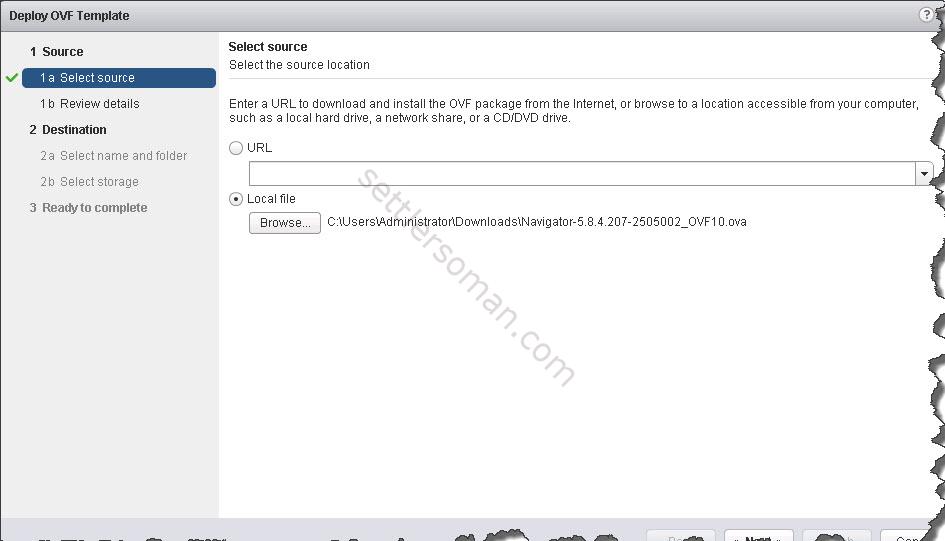
You will specify some standard template settings such as Network Settings, storage location (datastore) etc. For more information how to deploy OVF/OVA, please follow post here.
When you deploy VIN and log in to the vSphere Web Client you should see the vRealize Infrastructure Navigator icon: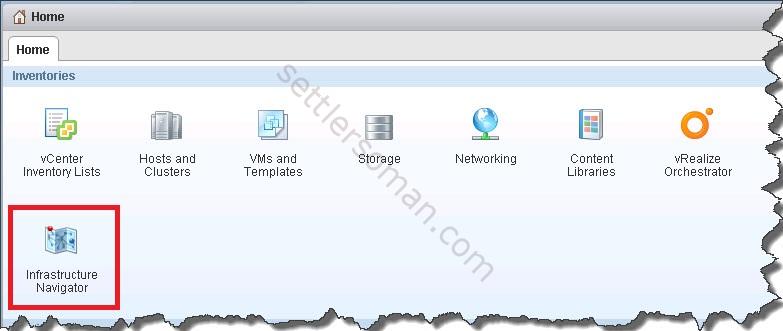
The VIN is not enabled by default because at first you need to add the license key. Then you can enable it by following the below steps:
- From the inventory menu, click Infrastructure Navigator.
- In the vRealize Infrastructure Navigator home page, click the Settings tab.
- Click Turn On VM Access.
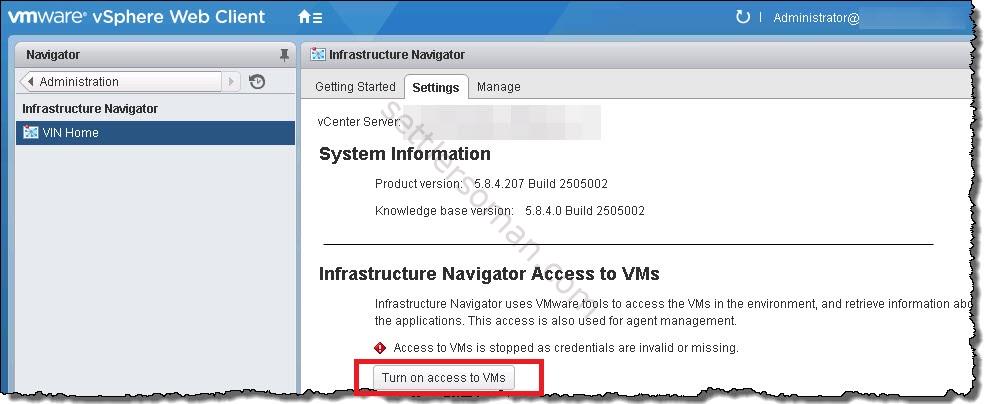
- Type the user name and password and click OK.
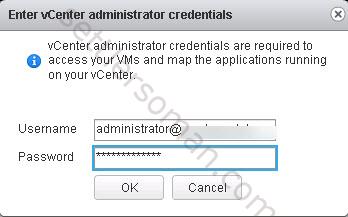
When you turn on access to VMs, you can go to your VM > Manage > Application Dependencies:
As you can see on above figure, there are some dependencies between two VMs. However there is one unknown service. If VIN does not detect application correctly, you can specify it manually:
- In the Services tab of the information panel, click the Add a service definition icon shown on the bottom. Change Map View to Table view.
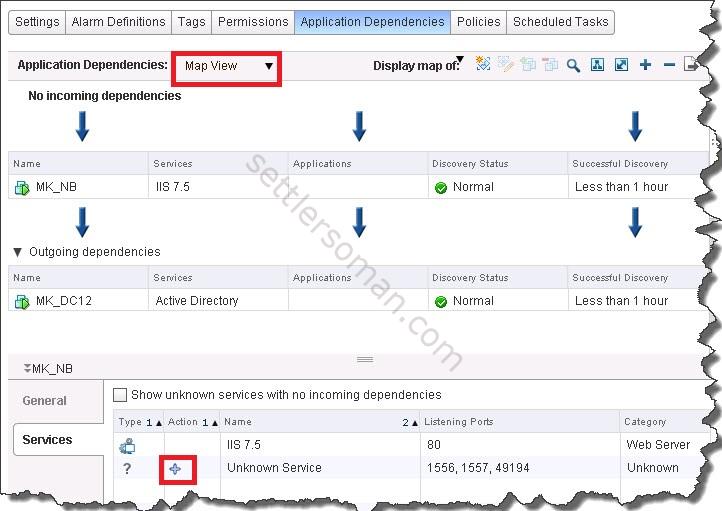
- Select either the Port or Process check boxes, or both. Specify a name for the unknown service. Select the category from the Category menu. Click OK.
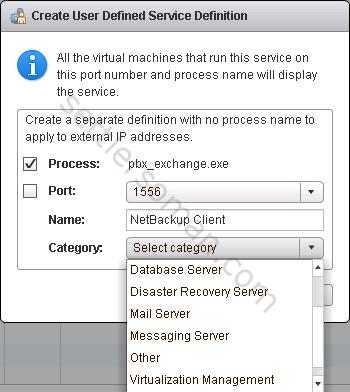
- My new service has been added (NetBackup Client) 🙂

Understanding Application Definition
An application definition is a rule or pattern by which a collection of connected virtual machines are identified as a deployed application instance. If you have Microsoft Exchange installed, each Exchange role is a service for which you can create application definitions. When you are creating a rule and you select Mail Server as the server category, each of the Exchange roles are listed under Service Name.
- From the inventory menu, select Infrastructure Navigator. Click the Manage tab.
- Click the Create Automatic Application Definition icon.
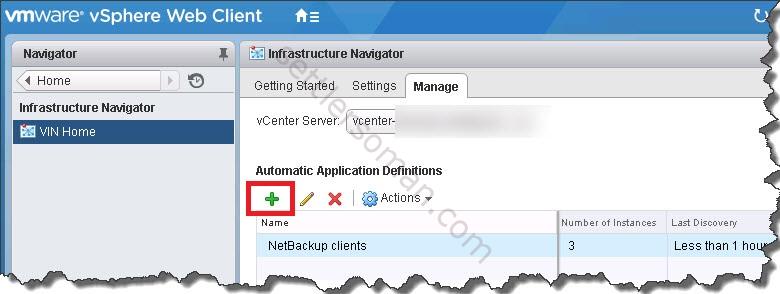
- Type a name and description for the application definition, and click Next.
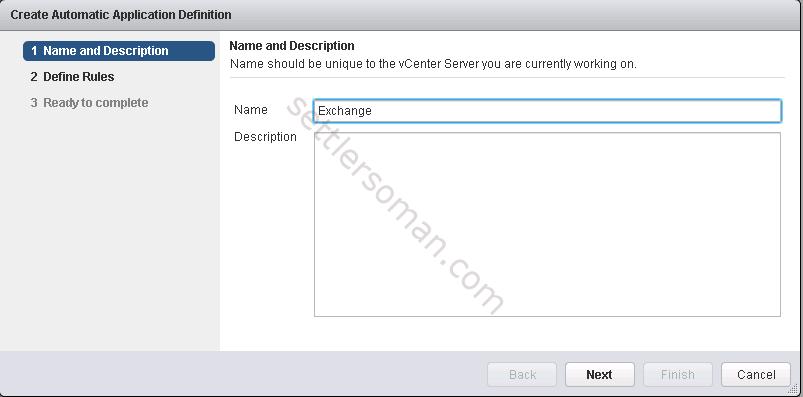
- To set the rule, select the service category from the Service Category drop-down menu and service name from the Service Name drop-down menu.
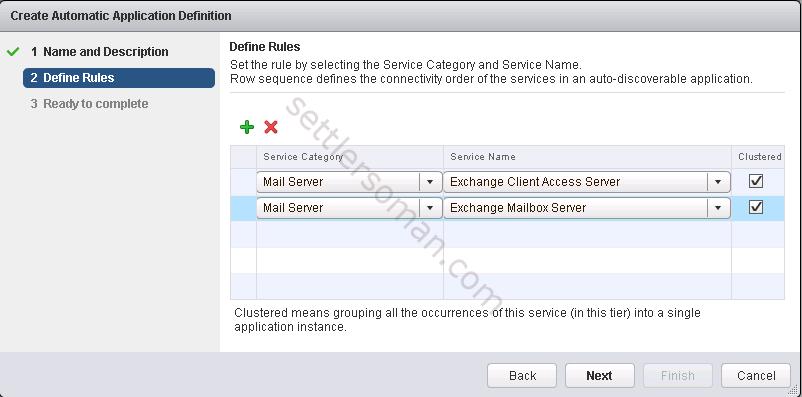
- Click Next.
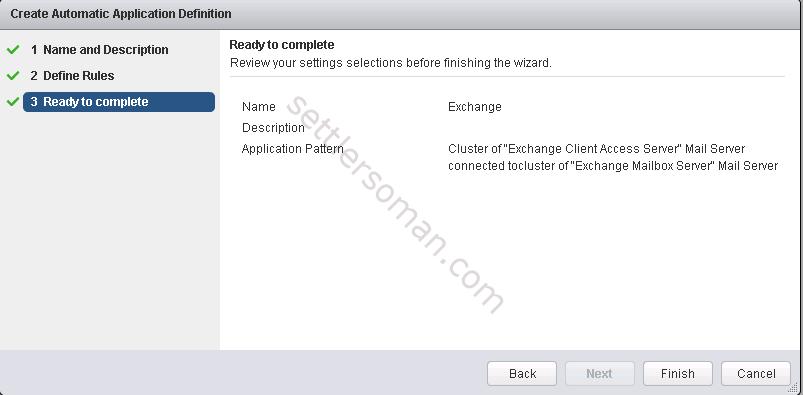
- Click Finish.
How to integrate vRealize Infrastructure Navigator with vROps?
At first of course you should deploy and configure vRealize Operations Manager 6.x. If you still use vCenter Operations Manager 5.x (vCOPS) I recommend you migrating it to the vROps. To integrate vRealize Infrastructure Navigator with vROps please follow the below steps:
- Download vRealize Operations Manager Management Pack for vRealize Infrastructure Navigator available here.
- Login in to vRealize Operations Manager admin page (https://IP_address/admin).
- Click Install a Software Update.

- Browse the Management Pack for vRealize Infrastructure Navigator, click Upload and then Next.
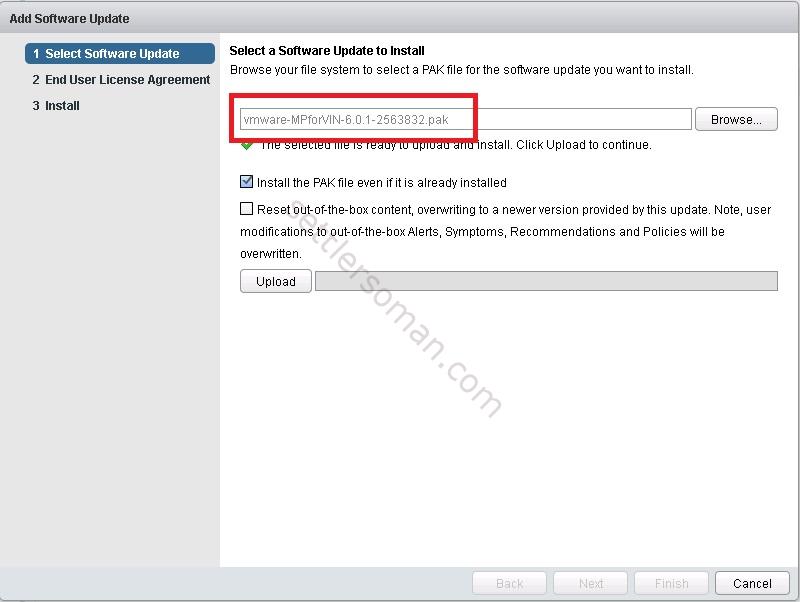
- Accept EULA and Install the Mangement Pack. Then click Finish.
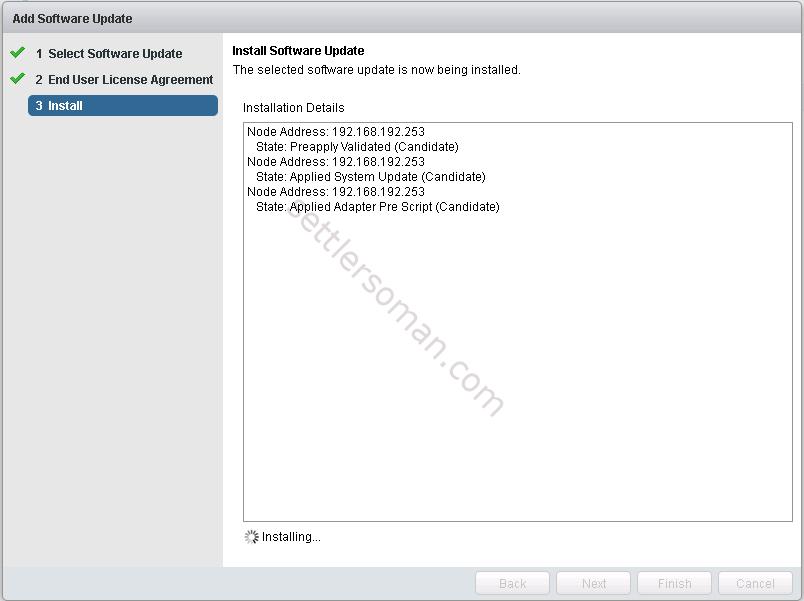
- Log in to vRealize Operations Manager and Home > Solutions. Click on icon show above to configure Management Pack for VIN.
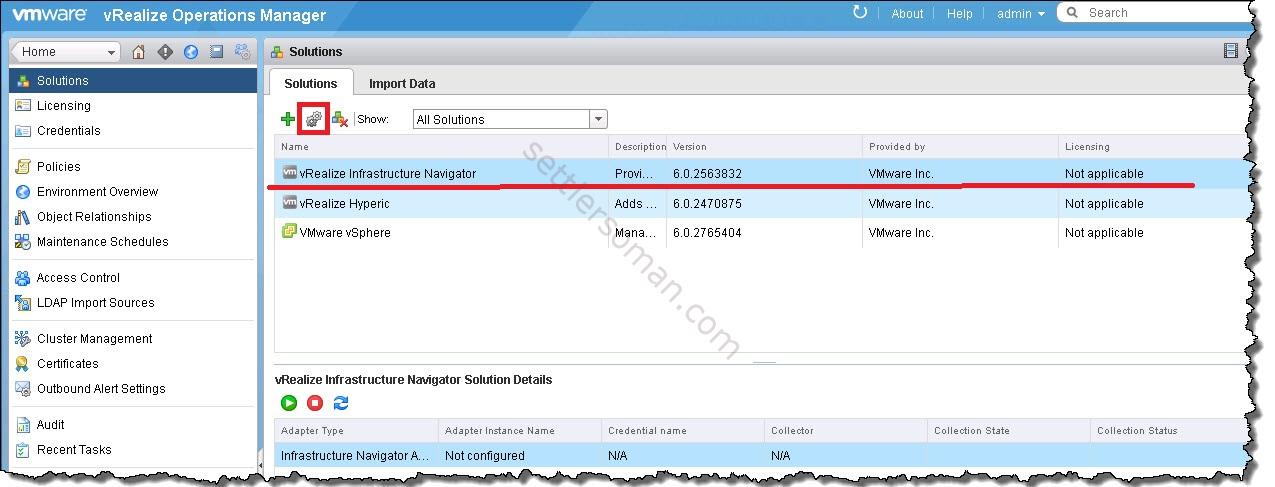
- Enter the adapter display name, add credentials and IP address of vCenter and click Save Settings. Click Close.
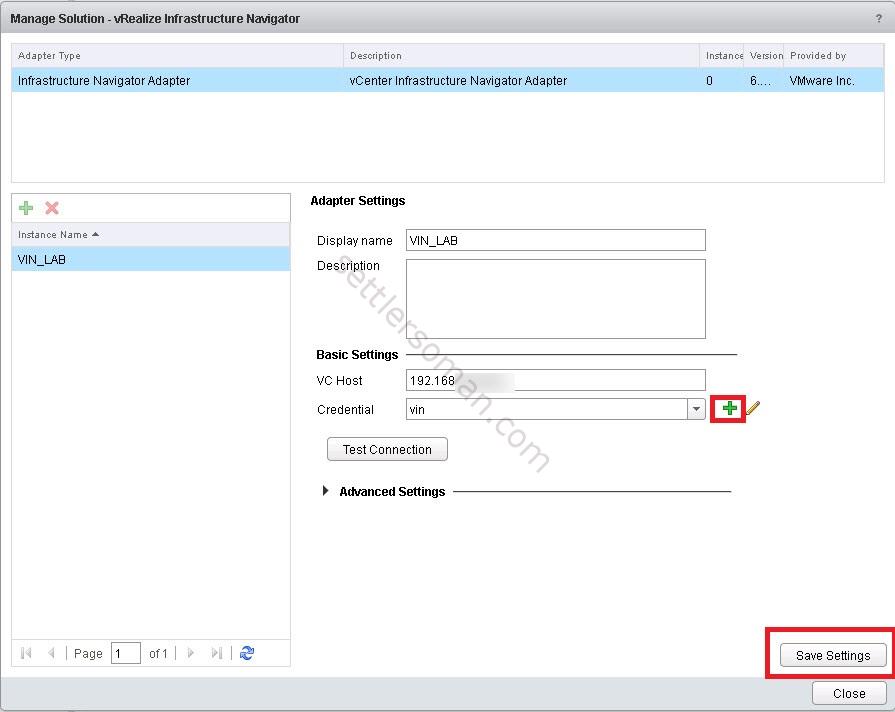
- You should see that VIN adapter is collecting data.

After integration, you can open vRealize Operations Manager pre-defined dashboards for VIN:
Conclusion
vRealize Infrastructure Navigator is a powerful feature helping Admins with daily monitoring of vSphere infrastructure. This software is also useful for consultants...Why? To check/confirm that VM can be shut down when it is necessary (no important application dependencies) 🙂
